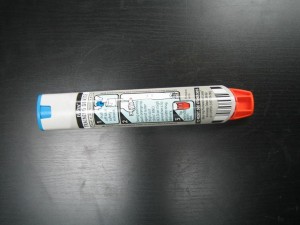Pediatric victims of cardiac arrest

Cardiac arrest is one of the major complications of heart attacks, a condition wherein the supply of blood to the heart is suddenly cut off causing it to stop functioning. A pre-existing cardiac disease often leads to cardiac arrest if left unmanaged. In adults, cardiac disease is caused by a variety of risk factors that are centered on unhealthy lifestyle choices. However, cardiac disease in children is mainly genetics-based, meaning it is usually congenital and not caused by modifiable risk factors. Congenital heart disease (CHD) is the number one congenital defect in children in the US. Nearly one out of 100 babies are born with CHD. That’s over 40,000 babies each year being born with a heart problem. Thousands of these babies will not live to see their first birthday and some will survive only up to early childhood. It is important that we recognize just how different heart attacks are in children when compared with adults in order to give CPR adequately.
Respiratory cause: asphyxial arrest
When children get heart attacks, it is not due to an obstruction in the vessels of a decreased flow of blood to the heart – it is caused by a respiratory problem. The symptoms that cascade to a heart attack start with respiratory failure, which places great stress on the heart. During respiratory failure, the blood isn’t getting oxygenated through ventilation. This causes the feedback system to make the heart pump faster (tachycardia). Prolonged and unmanaged tachycardia can cause the heart to develop a severe arrhythmia and even asystole (flatline). This is why cardiac arrests in children, particularly infants and toddlers, are called asphyxial arrest.
Pediatric Advanced Life Support (PALS)
Because the mechanisms that lead to cardiac arrest are different in children, pediatric CPR is also varied a little differently. Here are a few basics when giving CPR to infants and toddlers.
- Chest compressions are given at a depth of 1.5 inches, or roughly a third of the anterior-posterior chest diameter.
- Only two fingers are used to give compressions to infants, either two thumbs with the hands encircling the chest or the pointer and middle fingers pressing down on the sternum). For toddlers and younger children, one hand is used in the middle of the chest to give compressions.
- Clearing the airway in children is the same as when it is done on adults; clear the airway by tilting the head back and thrusting the jaw down (in the absence of a spinal injury).
- Compression:ventilation remains the same at 30:2. Compression rate is also the same at at least 100 per minute.
PALS is a two-day program that also introduces trainees to the medical management of pediatric patients. Medical management usually involves medication and diagnostics in order to provide adequate care to the victim or patient. There are very specific administration route and dosages when giving medications to children, an important concept when we training our students.
